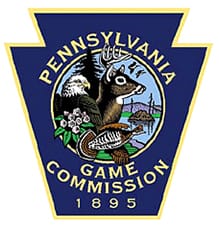

Harrisburg, PA -(AmmoLand.com)- The Pennsylvania Game Commission will spray for gypsy moths on more than 32,000 acres of state game lands this spring, the largest spraying effort to protect wildlife habitat since 2008.
Spraying will occur from late April to early May on nine different game lands, as soon as leaf-out occurs and gypsy-moth egg masses hatch.
“Those participating in spring gobbler seasons might encounter helicopters or other aircraft spraying state game lands or other forested areas,” said Dave Gustafson, the Game Commission’s chief forester. “We want those hunters to rest assured that the spray – Bacillus thuringiensis (Bt) – is not harmful to humans, and it usually will take only a few hours to complete each spray block.”
The spraying follows a 2015 statewide inventory of gypsy-moth impacts that detected defoliation on more than 90,000 acres. The game lands to be sprayed were selected based on the importance of oaks there; whether they included existing Important Bird Areas, Important Mammal Areas or critical/unique habitats; their past gypsy-moth impacts and resulting forest-habitat conditions; and the financial values of timber stands there.
To pay for the spraying, the Game Commission will transfer $720,000 from its Pittman-Robertson Federal Wildlife Grant funding to the state Department of Conservation and Natural Resources, which oversees the Statewide Cooperative Spray Program for gypsy moths.
Last year, the agency transferred $250,000 to DCNR for spraying on 12,430 acres.
“While the agency has been conducting limited gypsy-moth spraying to target important areas over the past six years, we have not had an outbreak of this severity since late 2008 into 2009,” Gustafson said. “Prior to that, it was back to the early 1990s the last time we encountered this widespread damage.”
Gustafson said gypsy-moth damage can cause a rapid transition of forest habitat, changing mast-producing mixed oak stands that are beneficial to wildlife to stands dominated by birch and maple.
“Prior to gypsy-moth impacts, oak trees in Huntingdon County reportedly were producing 173 pounds of acorns per acre,” he explained. “After gypsy moths, the same areas were yielding only 67 pounds of acorns per acre. Seven of the eight lowest acorn production years occurred after gypsy moths hit the area, and 43 percent of oak trees were lost.”
Peter Sussenbach, director of the Game Commission’s Bureau of Wildlife Habitat Management said that, based on how valuable oaks are for wildlife on game lands, the agency simply can’t afford not to invest in spraying this year.
“We know mixed-oak habitats are important for all wildlife,” Sussenbach said. “Squirrel populations fluctuate with acorn crops. If acorn production is low, bears will den earlier, weigh less, produce fewer and smaller cubs and get into more nuisance situations. Deer reproduction and their survival over winter suffer when acorns are sparse. Neotropical birds, such as cerulean warblers, occupy habitats dominated by oaks. Wild turkey and ruffed grouse populations also depend on acorns.”
In 2008, the agency contracted to spray 42,731 acres on 38 game lands.
This year’s spraying is planned for the following regions: Southcentral, 12,681 acres; Northeast, 8,629 acres; and Southeast, 11,104 acres.
The Northwest, Northcentral, and Southwest regions, which suffered little to no gypsy moth defoliation, are not slated for spraying at this time.
Game lands slated for spraying and their acreages are as follows:
Southcentral Region:
- SGL 88 In Perry and Juniata counties, 6,282 acres
- SGL 107, in Juniata County, 4,920 acres.
- SGL 112, in Huntingdon County, 1,479
Northeast Region:
- SGL 57, in Wyoming County, 1,115 acres.
- SGL 58, in Columbia County, 6,816 acres.
- SGL 260, in Luzerne County, 698 acres.
Southeast Region:
- SGL 106, in Berks and Schuylkill counties, 5,981 acres.
- SGL 211, in Dauphin County, 3,501 acres.
- SGL 217, in Schuylkill, Lehigh, and Carbon counties, 1,622 acres.
About Pennsylvania Game Commission:
For more than 100 years, the Game Commission has managed the Commonwealth’s wildlife resources for all Pennsylvanians. With the help of more than 700 full-time employees and thousands of part-timers and volunteers, the agency provides a host of benefits to wildlife, state residents and visitors.
For more information, visit: www.pgc.state.pa.us.
